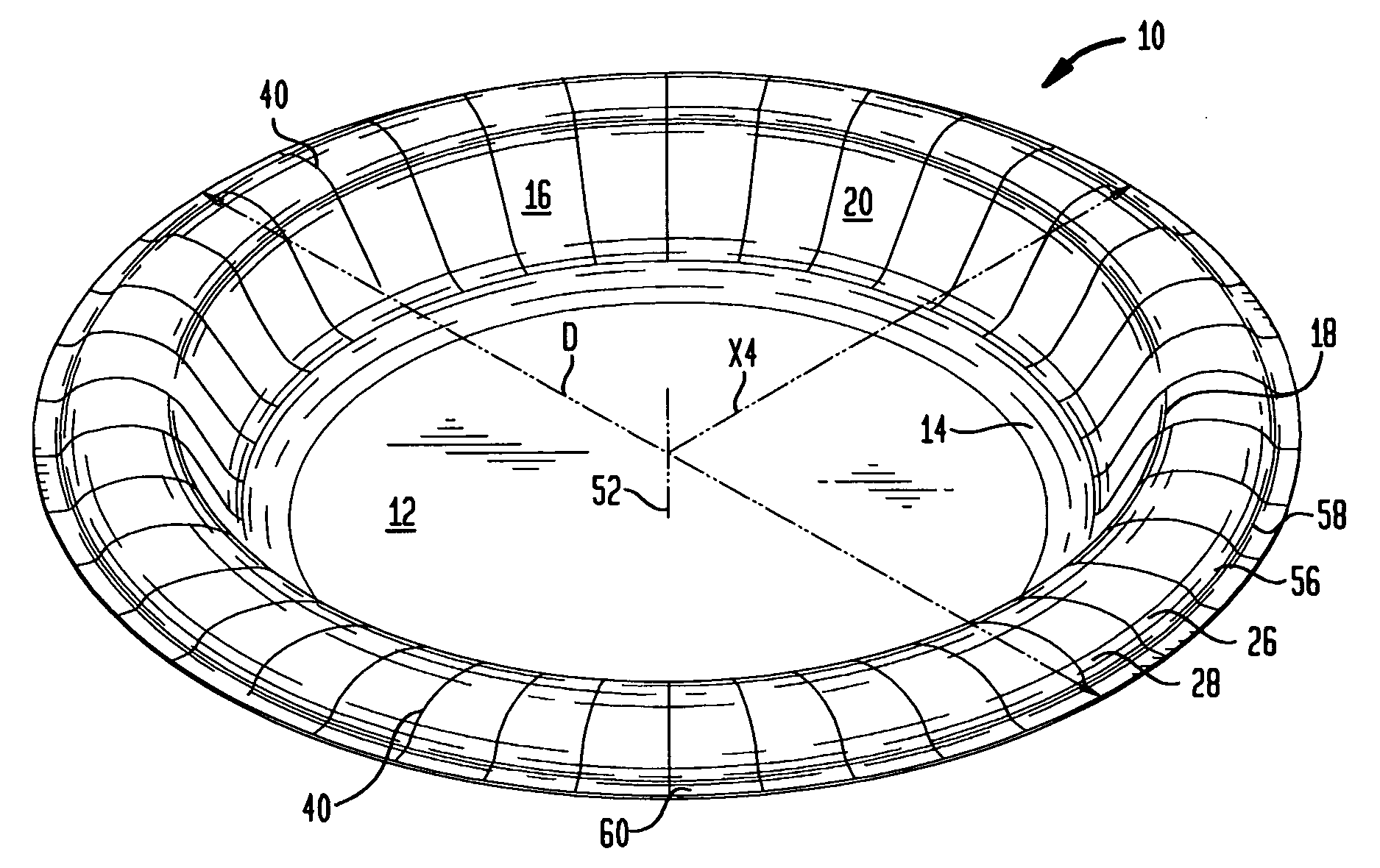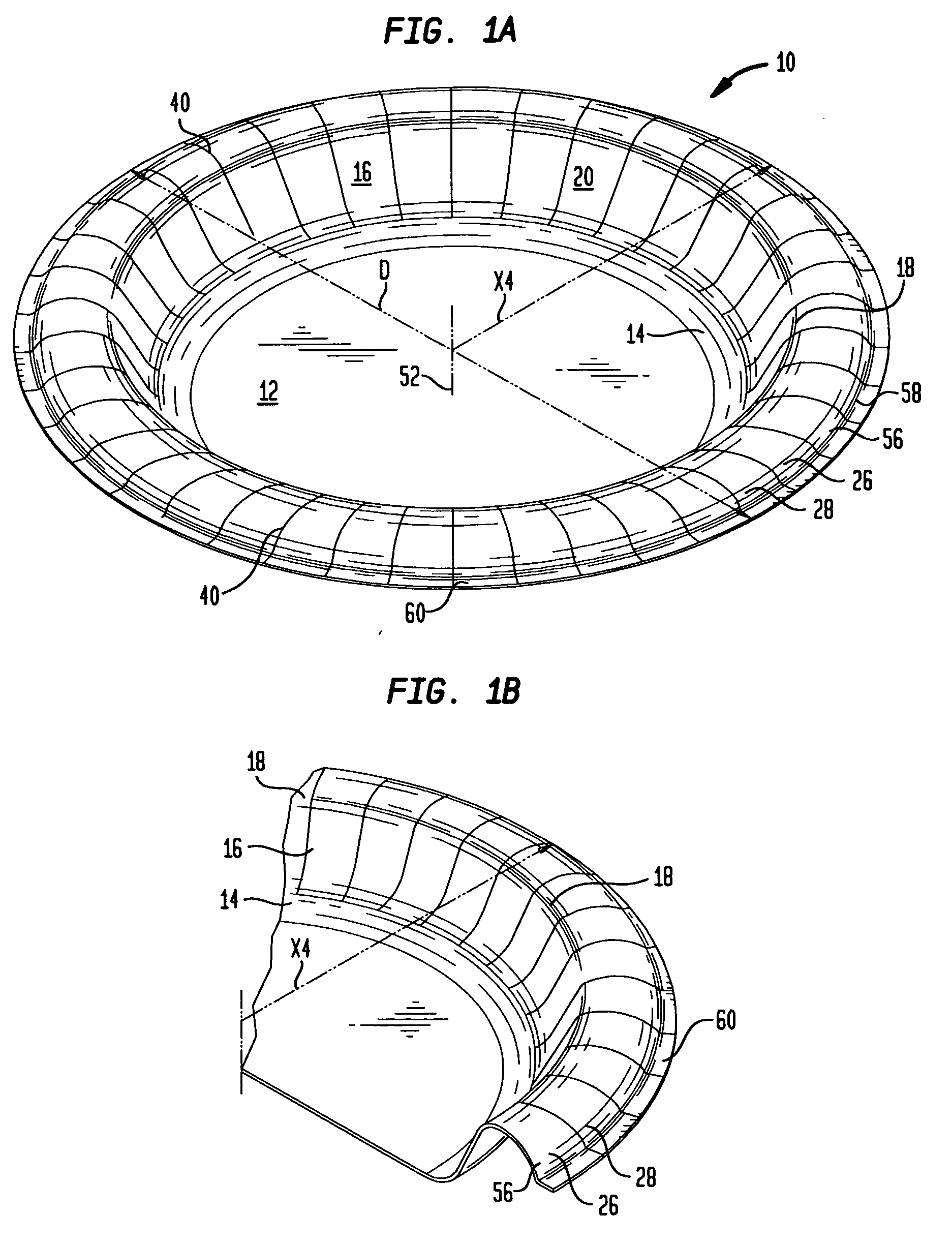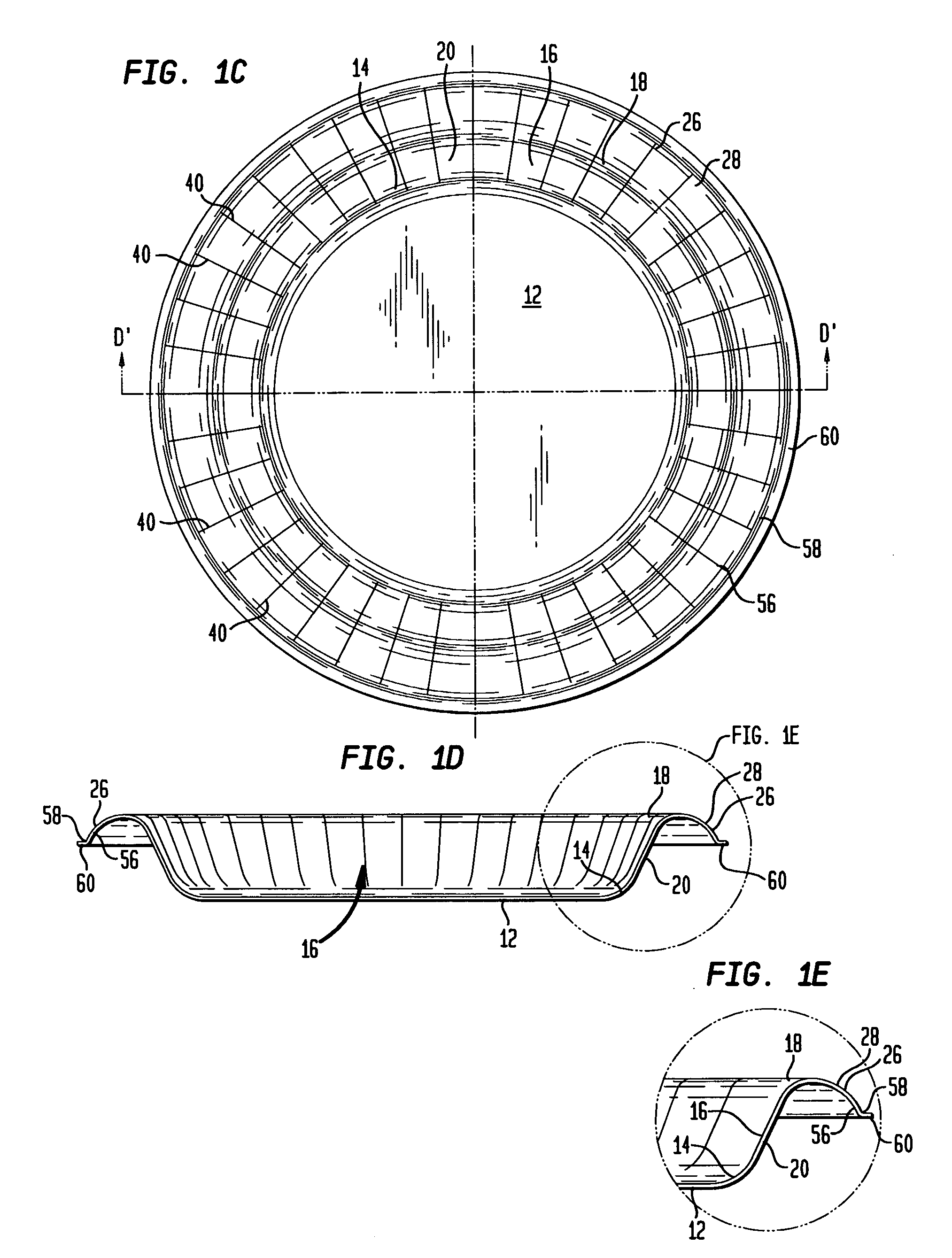Pressed paperboard servingware with improved rigidity and rim stiffness
a technology of rim stiffness and rigidity, applied in the field of pressed paperboard disposable containers, can solve the problems of high cost, inability to meet the needs of customers,
- Summary
- Abstract
- Description
- Claims
- Application Information
AI Technical Summary
Benefits of technology
Problems solved by technology
Method used
Image
Examples
Embodiment Construction
[0070] The invention is described in detail below with reference to numerous embodiments for purposes of exemplification and illustration only. Modifications to particular embodiments within the spirit and scope of the present invention, set forth in the appended claims, will be readily apparent to those of skill in the art.
[0071] As used herein, terminology is given its ordinary meaning unless a more specific definition is given or the context indicates otherwise. Disposable containers of the present invention generally have a characteristic diameter. For circular bowls, plates, platters and the like, the characteristic diameter is simply the outer diameter of the product. For other shapes, an average diameter can be used; for example, the arithmetic average of the major and minor axes could be used for elliptical shapes, whereas the average length of the sides of a rectangular shape is used as the characteristic diameter and so forth. Sheet stock refers to both a web or roll of m...
PUM
 Login to View More
Login to View More Abstract
Description
Claims
Application Information
 Login to View More
Login to View More - R&D
- Intellectual Property
- Life Sciences
- Materials
- Tech Scout
- Unparalleled Data Quality
- Higher Quality Content
- 60% Fewer Hallucinations
Browse by: Latest US Patents, China's latest patents, Technical Efficacy Thesaurus, Application Domain, Technology Topic, Popular Technical Reports.
© 2025 PatSnap. All rights reserved.Legal|Privacy policy|Modern Slavery Act Transparency Statement|Sitemap|About US| Contact US: help@patsnap.com



